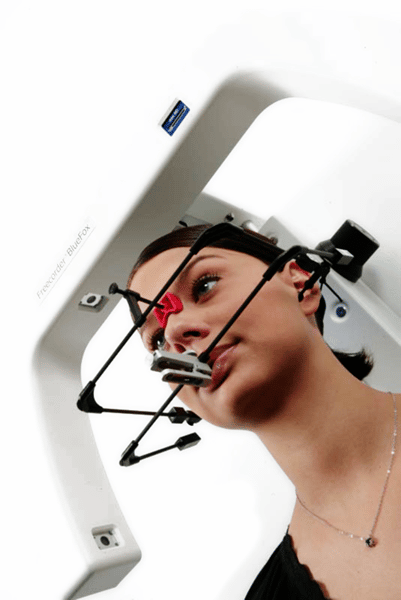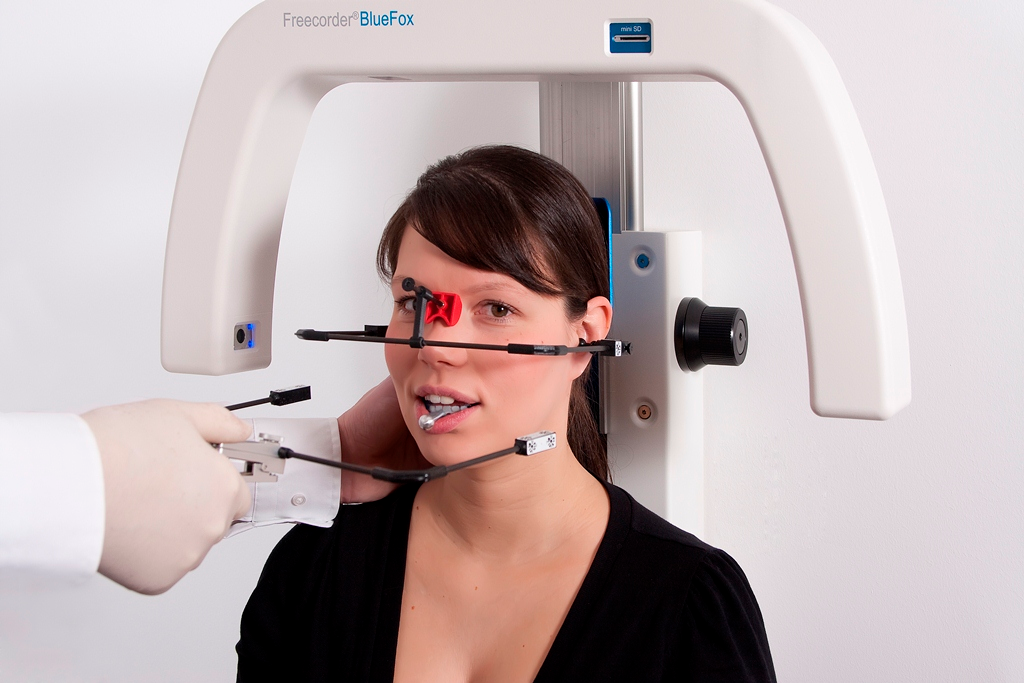FUNCTIONAL DIAGNOSTICS / TEMPOROMANDIBULAR JOINT MEASUREMENT
Do you suffer from headaches and back problems, neck tension or tinitus? You have been looking for causes at different doctors for a long time? In many cases, such problems are related to a malfunction of your chewing apparatus and is referred to in medicine as craniomandibular dysfunction. Dental functional diagnostics is a scientifically recognized procedure that allows us to very accurately assess the interaction of the patient's temporomandibular joints, teeth and muscles.
This type of diagnosis is often used to precisely analyze a malfunction in the area of the masticatory system, the craniomandibular dysfunction (CMD), and thus to draw conclusions for a therapeutic approach.



Advantages of functional diagnostics for the patient
The visualization of the individual temporomandibular joint trajectories in motion on the computer screen enables the treating dentist to recognize organic malfunctions more clearly and to assess their symptoms in context. A therapeutic decision can thus be made much more cause-related. As a result, a functional disorder can be treated more quickly and holistically.
Advantages of functional diagnostics with the FREECORDER
- Fast, non-contact and extremely precise 3D recording of the temporomandibular joint trajectories
- extraoral/extracorporal metrology
- Very comfortable for patients
- Short set-up and preparation time for the patients and the dentist
- Easy handling for the dentist
The most important fields of application of functional diagnostics / temporomandibular joint measurement
Since the muscles of the masticatory system are connected to the spinal musculature via functional chains, the symptoms of a functional disorder (CMD symptoms) often extend beyond the area of the head. Today we know from empirical data that, for example, pelvic obliquity and scoliosis of the spine are triggered to approx. 80% by occlusion disorders and the resulting CMD. Since dental and orthopedic problems can influence each other in CMD, CMD symptoms must be considered in an interdisciplinary manner.

Common symptoms of CMD
In the area of the ears
- Dizziness
- Totals
- Ear noise
- Tinnitus(Wikipedia link)
The neck
- Shoulder
- Arm pain
- Postural deformities
- Tension
CMD symptoms in the area of the face & brain
- Migraine(Wikipedia link)
- Headache
- Trigeminal neuralgia(Wikipedia link)
Why is functional diagnostics so medically valuable?
The temporomandibular joints, teeth and masticatory muscles are part of the human masticatory system, which is exposed to numerous external influences during the course of a lifetime. This system is normally very finely tuned to each other. If this is not the case, very damaging effects with chronic complaints can be the result in the long term. The close interaction of the masticatory system with the skeletal muscles is important for understanding the symptoms. Are the symptoms of dysfunction present.these are overlapping.f and affecting? Accordingly, they disturb the entire body statics. The dentist can help with his therapy. Headaches, tension, neck and back pain and much more are the classic symptoms that patients complain about. The need for functional diagnostics is quickly established. The potential of a cause-oriented therapy should not be underestimated.

